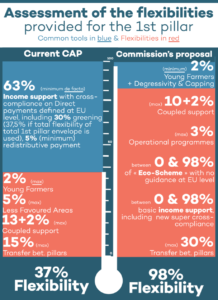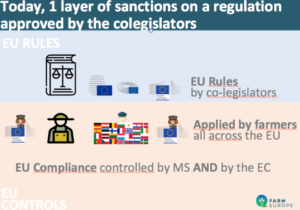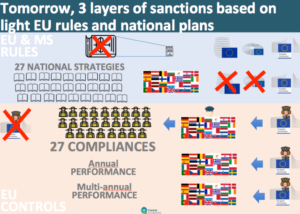Communication from the European Commission
Stepping up EU Action to Protect and Restore the World’s Forests.
2019, July 24th
After last December’s announcement of the EU’s initiative to “step up European Action against Deforestation and Forest Degradation”, the European Commission has published yesterday its Communication“ on stepping up EU Action to Protect and Restore the World’s Forests.”
The document was presented by Frans Timmermans (first vice-president of the Commission) and Jyrki Katainen, (vice-president of the Commission and Commissioner for Jobs, Growth, Investment & Competitiveness) and praised both by Karmenu Vella (Commissioner for environment, maritime affairs and fisheries) and Neven Mimica (Commissioner for International Development).
The Commission starts with the following assessment: Despite the EU’s recent positivetrend in the growth of domestical forest cover, the global level still shows a bleak picture of continuing logging and rapidly disappearing forests, in particular regarding tropical primary forests. Indirectly, through consumption and trade, the EU is causing deforestation too as it represents around 10% of final consumption of products associated with deforestation. These products include palm oil, meat, soy, cocoa, rubber, timber and maize in the form of processed products or services. Thus the Communication expressed that deforestation and forest degradation pose a significant risk and challenge that needs to be tackled globally with more actions ”as despite all the efforts, we currently fall short on the conservation and sustainable use of forests”.
Therefore the Commission calls for “a variety of regulatory and non-regulatory actions” and proposes a list of initial actions to reach its two-fold objective of protecting the existing forests and to restore and increase the coverage worldwide.
Regarding the document, Commissioner Frans Timmermans has expressed that due to the EU’s institutional cycle it was not appropriate to come out with new pieces of legislation, however they wanted to already set the scene for the incoming Commission so that they can “hit the ground running”.
Commissioner Jyrki Katainen has stated that despite that the EU cannot extend its legislative power over other countries it still can use its “power to regulate the market”as for the future there shall be “no market in EU for unsustainable products”. Thus they want “to change they way the market operates”.
Therefore the EU wishes to enhance its role and use its power from being a major consumer, investor and trading partner to enhance and enforce environmental and sustainability commitments.
In doing so, the Commission has set out five priorities:
- To reduce the EU consumption footprint on land and encourage the consumption of products from deforestation-free supply chainsin the EU;
- To work in partnership with producing countriesto reduce pressures on forests and to “deforest-proof” EU development cooperation;
- To strengthen international cooperationto halt deforestation and forest degradation, and encourage forest restoration;
- To redirect financeto support more sustainable land-use practices;
- To support the availability of, quality of, and access to information on forests and commodity supply chains, and support research and innovation.
Regarding agriculture, land use change and biofuels, the Communication states bioenergy – amongst many other factors – as a driver of deforestation and forest degradation. It goes further on highlighting that negative impact can be caused on forests when pasture of agricultural land previously used for food and feed markets is diverted to the production of fuels from biomass (indirect land use change – ILUC). It also declares that “the EU has started to address the risk of deforestation arising from the increased use of biofuels”by bringing up and describing the EU’s actions in the recasted REDII and its delegated act with its specified sustainability criteria for biofuels. Lastly, it illustrates with FAO’s 2016 Report on the state of world forests that “approximately 80% of global deforestation is caused by the expansion of land used for agriculture”.
Unlike the draft version of text, the final version doesn’t include any reference on the Commission’s report on “The development of plant proteinsin the EU”, highlighting their potential agronomic, economic and climate benefits of protein crops.
Moreover, the final text only calls meat and livestock in general as a cause for deforestation but does not specifically name ‘beef’ as a source and makes no suggestions of modifying the high/low ILUC criteria approach to concretely include new elements – such as cocoa or beef – into it yet.
The reference of the previous version was also deleted on smallholder farmers, namely that “smallholders play a major role in commodity production, they are key actors to fight against deforestation” and currently the final version only states to “develop and implement incentive mechanisms for smallholder farmers to maintain and enhance ecosystem services and products provided by sustainable forest management and agriculture.”
Consequently, for the future in its key actions the Commission intends to:
- Establish a Platform for multi-stakeholder and Member State dialogueon deforestation, forest degradation and on sustainably increasing world’s forest cover
- Encourage the strengthening of standards and certification schemes that help to identify and promote deforestation-free commodities
- In the context of the clean energy for All Europeans legal framework in place, address relevant aspects on renewable energy and biofuels, review all relevant aspects of the report accompanying Commission Delegated Regulation (EU) 2019/807 in 2021and, if appropriate, revise Delegated Regulation (EU) 2019/807 in 2023 based on the latest available evidence.
- Ensure that EU support for agricultural, infrastructure, mining, urban, peri- urban, and rural policies in partner countries does not contribute to deforestation and forest degradation.
- Assess, together with the EU Member States, possible sustainable mechanisms to catalyse green finance for forests and how to further leverage and increase and redirect both public and private funding.
- And establish an EU Observatoryon deforestation, forest degradation, changes in the world’s forest cover, and associated drivers a source of reliable data by possibly using the Copernicus satellites for monitoring.
During the Q&A, Commissioner Jyrki Katainenunderlined that increased trading must be more sustainable and that the EU doesn’t want to make any compromises on the issue deforestation. Therefore he also defended the Mercosur tradedeal agreement by stating that it contains both the binding commitment of the Paris Agreement and a “strong, robust sustainable development chapter, which gives the EU a stronger hand to have a political dialogue on sustainability related issues”. Therefore he insisted that if approved, it would give the EU more influence in preventing deforestation in Brazil than “just to follow what is the development”.
Industry, NGO, foreign country reactions
The EU’s grain and oilseed trade, crushing and feed industry sectors represented by COCERAL, FEDIOL and FEFAC welcomed the Communication and stated that “setting up effective multilateral institutional dialogue with exporting countries is the most effective way to address sustainable forest management.”
Green NGOs, such as WWF and Fern has also complimented the work done by the Commission and called it “a pivotal step in securing a much-needed plan of action to address the EU’s significant contribution to global deforestation” but also called for more as well as to “fundamentally reform of the EU’s bioenergy policies, which both drive deforestation and prevent reforestation and are incentivising things that increase emissions dramatically compared to fossil fuels.”
Tropical forested countries have yet to have officially reacted on the Communication.


